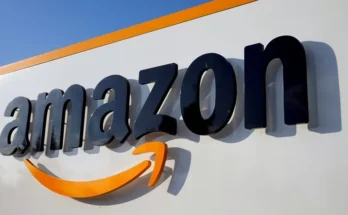Student loan debt has become a significant issue in the United States, affecting millions of borrowers who struggle with repayment. In response to this crisis, the Biden administration has introduced a comprehensive student loan debt relief plan aimed at providing assistance to those burdened by student loans. Let’s delve into the key components and implications of this plan.
Overview of Student Loan Debt in the United States
Before delving into the specifics of the Biden administration’s plan, it is essential to understand the scope of the student loan debt problem in the United States. Currently, the nation’s total student loan debt surpasses $1.6 trillion, with more than 44 million Americans carrying some form of student loan debt. This staggering amount has far-reaching consequences, impacting individuals’ financial well-being, hindering economic growth, and exacerbating social inequalities.
Under the Biden administration’s plan, several measures have been proposed to alleviate the burden of student loan debt. Eligibility for the debt relief program primarily focuses on borrowers who have federal student loans and are experiencing financial hardships. The plan targets individuals with low incomes or significant financial obligations.
One significant aspect of the plan is the implementation of loan forgiveness programs. Borrowers may be eligible for partial or complete forgiveness of their student loan debt. Existing forgiveness programs, such as Public Service Loan Forgiveness (PSLF), will be expanded, and the application process will be streamlined to ensure accessibility for borrowers.
Additionally, the plan aims to reduce the monthly payments for borrowers. This includes revising income-driven repayment plans to make payments more affordable based on individual income and family size. The plan also proposes extending the current payment pause and interest waiver, providing temporary relief during times of economic uncertainty.
The Biden administration’s student loan debt relief plan brings several benefits and implications. By easing financial burdens, the plan allows borrowers to redirect their finances towards other essential needs, such as housing, healthcare, and saving for the future. This newfound financial freedom can contribute to reducing overall household debt and increasing consumer spending, thereby stimulating the economy.
Furthermore, the plan addresses racial and socioeconomic disparities. Student loan debt disproportionately affects low-income and minority communities, exacerbating existing inequalities. The debt relief plan seeks to bridge this gap by providing targeted relief to those who need it most. Expanding loan forgiveness programs and revising income-driven repayment plans can create more financial freedom for marginalized communities.
While the Biden administration’s plan has received significant support, it has also faced criticism and challenges. Some argue that the cost of the program, estimated between $300 billion to $1 trillion, is too high. There are concerns about the potential unfairness of benefiting those who pursued higher education at the expense of those who did not. Additionally, implementing such a complex program poses administrative challenges, including determining eligibility criteria and processing applications.
The Biden Administration’s Student Loan Debt Relief Plan
The issue of student loan debt has become a significant concern in the United States, affecting millions of borrowers who struggle with the burden of repayment. In response to this growing crisis, the Biden administration has introduced a comprehensive student loan debt relief plan aimed at providing much-needed assistance to borrowers. This article will explore the key components of the plan, its benefits, criticisms, and implications.
Eligibility Criteria for Borrowers
The Biden administration’s plan focuses on helping borrowers who are struggling the most with their student loan debt. To be eligible for the debt relief program, individuals must meet certain criteria. The plan primarily targets borrowers who have federal student loans and are experiencing financial hardships, such as those with low incomes or significant financial obligations.
Loan Forgiveness Programs
One of the key elements of the Biden administration’s plan is the implementation of loan forgiveness programs. Under this initiative, borrowers may be eligible for partial or complete forgiveness of their student loan debt. The plan proposes specific measures to expand existing forgiveness programs, such as Public Service Loan Forgiveness (PSLF), and streamline the application process to make it more accessible to borrowers.
Reduction of Monthly Payments
Recognizing the burden of high monthly loan payments, the Biden administration’s plan aims to reduce the financial strain on borrowers by implementing measures to lower monthly payment amounts. This includes revising income-driven repayment plans to ensure that payments are more affordable based on an individual’s income and family size. Additionally, the plan proposes extending the current payment pause and interest waiver, providing temporary relief to borrowers during times of economic uncertainty.
Benefits and Implications of the Debt Relief Plan
Easing Financial Burdens
The student loan debt relief plan has the potential to alleviate significant financial burdens for millions of borrowers. By providing loan forgiveness and reducing monthly payments, individuals can experience immediate relief, allowing them to redirect their finances toward other essential needs, such as housing, healthcare, and saving for the future. This financial freedom can also contribute to reducing overall household debt and increasing consumer spending, thereby stimulating the economy Stimulating the Economy
In addition to easing financial burdens, the student loan debt relief plan has the potential to stimulate the economy. By reducing monthly payments and freeing up disposable income, borrowers can contribute more to consumer spending, promoting economic growth. Additionally, the plan’s focus on loan forgiveness for those in public service professions, such as teachers and healthcare workers, can incentivize individuals to pursue these careers, addressing critical workforce shortages.
Addressing Racial and Socioeconomic Disparities
Student loan debt disproportionately impacts low-income and minority communities, exacerbating existing social inequalities. The Biden administration’s plan aims to address these disparities by providing targeted relief to those who need it most. By expanding loan forgiveness programs and revising income-driven repayment plans, the plan can help bridge the gap between those with significant financial obligations and those with more financial freedom.
Criticisms and Challenges
The Biden administration’s student loan debt relief plan, while aiming to address the pressing issue of student loan debt, has faced criticism and challenges. These can be categorized into three main areas: cost and funding concerns, opposition from critics, and implementation and administrative challenges.
Cost and Funding Concerns
One significant criticism of the debt relief plan revolves around its cost and funding. The estimated price tag for the plan ranges from $300 billion to $1 trillion. Critics argue that this is a substantial financial burden on the government and taxpayers. Concerns are raised about how the plan will be funded and the potential long-term economic implications of such a massive expenditure.
Opposition from Critics
The student loan debt relief plan has also faced opposition from critics who question its fairness and efficacy. Some argue that the plan may disproportionately benefit those who pursued higher education, potentially neglecting those who did not attend college or chose more affordable education alternatives. Critics also argue that providing widespread debt relief might create a moral hazard by incentivizing future borrowers to take on excessive debt with the expectation of future forgiveness.
Implementation and Administrative Challenges
Implementing such a comprehensive debt relief plan poses significant administrative challenges. Determining eligibility criteria and processing applications for millions of borrowers can be a complex and time-consuming task. Developing an efficient and fair system to assess financial hardship and distribute relief is a considerable logistical challenge. Additionally, ensuring proper oversight and accountability in managing the program’s funds and preventing fraud or abuse adds another layer of complexity.
These implementation challenges are compounded by the sheer scale of the student loan debt crisis and the multitude of borrowers involved. It will require robust coordination between government agencies, loan servicers, and other stakeholders to effectively execute the debt relief plan.
While criticisms and challenges exist, the Biden administration is committed to addressing the student loan debt crisis and working towards a more sustainable solution. They are actively engaging with experts, stakeholders, and lawmakers to refine and improve the plan’s implementation and address concerns raised by critics.
Navigating the complexities of cost, fairness, and implementation will require careful consideration and collaboration. It is essential to strike a balance between providing relief to borrowers in need and ensuring responsible fiscal management to safeguard the long-term financial stability of the education system and the economy as a whole.
Addressing the student loan debt crisis is an ongoing process, and the Biden administration’s plan represents a significant step forward. By acknowledging the challenges, engaging in constructive dialogue, and refining the plan’s implementation, there is potential to make a meaningful impact on the lives of millions of borrowers burdened by student loan debt.
Conclusion
The Biden administration’s student loan debt relief plan is a significant step toward addressing the growing crisis of student loan debt in the United States. By providing targeted relief to those who need it most, the plan can ease financial burdens, stimulate the economy, and address racial and socioeconomic disparities. While there are challenges and criticisms, the plan has the potential to make a significant impact on the lives of millions of Americans struggling with student loan debt.
Frequently Asked Questions
- How can I determine if I’m eligible for student loan debt relief?
Eligibility criteria for the debt relief plan are still being developed. It is recommended to keep an eye on updates from the Department of Education and contact your loan servicer for more information.
2. Will the debt relief plan cancel all of my student loans?
The debt relief plan proposes loan forgiveness for some borrowers, but the details of who will be eligible and for how much are still being developed.
3. How will the debt relief plan impact my credit score?
The debt relief plan is unlikely to have a significant impact on your credit score, as long as you continue to make payments on time.
4. Can private student loans be included in the debt relief plan?
The debt relief plan primarily focuses on federal student loans, but there may be provisions for private student loans in the future.
5. What steps should I take if I want to apply for the debt relief program?
The debt relief program is still in development, and details about how to apply are not yet available. It is recommended to monitor updates from the Department of Education and contact your loan servicer for more information as it becomes available.



